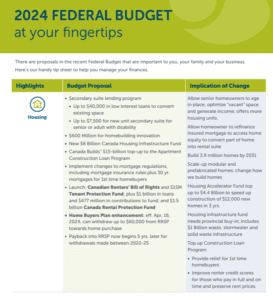6 Wirehouse Comp Trends to Watch in 2023

What You Need to Know
Industry compensation experts say there likely won’t be many major changes at wirehouses in 2023.
They predicted that we would see a continued focus on advisor team-based compensation.
The experts had differing opinions on whether we could see changes made to comp grids at the wirehouses.
There were few significant changes made to compensation at the wirehouses this year, and there likely won’t be many major changes in 2023 either, outside of tweaks already signaled by Merrill Lynch in recent weeks, according to advisor compensation experts interviewed by ThinkAdvisor over the past few weeks.
Two of the three experts we spoke to predicted we would see a continued focus on both advisor team-based compensation and encouragement of fee-based revenue versus transactional revenue.
But they were split on whether we should expect wirehouses to change their comp grids. Before the pandemic, such changes were typically a yearly occurrence.
Below are the experts’ top expected changes for 2023 compensation.
1. There could be a return to grid changes in 2023.
“Since we haven’t seen too many grid changes the last few years, I would expect the firms to consider increasing grid level thresholds (i.e., moving up the requirement to get a certain payout),” according to Louis Diamond, president of Diamond Consultants.
“The rationalization would be inflation and increased costs to operate the business since the costs of professionals across the board have risen,” he told ThinkAdvisor.
Merrill Lynch “altering its growth grid … has been wildly unpopular since advisors feel as if they are being pushed to bring in a certain number of households even if this is contra to their business model (i.e., advisors who focus on the UHNW and don’t focus on volume of households or those who grow based on acquiring additional assets from existing households),” he pointed out.
Merrill Lynch said in late 2021 it was making no major changes to its pay grid for 2022 but decided to move to a trailing 12-month grid structure and away from its retroactive comp structure in which payout was determined based on the prior calendar year’s production.
The incentive grid “remains core to the comp program,” Merrill said at the time. But “compensation will now be calculated based on an advisor’s previous 12 months of production,” starting Jan. 1, 2022, the company noted. “After each month, the most recent 12 months of production will determine that month’s grid payout.”
Diamond’s prediction is Merrill “will make it so advisors just need to grow their business by a certain compound annual growth rate (CAGR) or grow it by an amount of AUM rather than by a number of households.”
However, executive search consultant Mark Elzweig, president of Mark Elzweig Co., predicted: “Going forward, firms will leave grid breakpoints untouched.”
“The bottom has been reached in advisor grid breakpoints,” he said. The decisions by Morgan Stanley, UBS and Wells Fargo “to leave their grids untouched says it all,” according to Elzweig.
“The hypercompetitive recruiting environment now includes other wirehouses, regionals and turnkey independent platforms who offer attractive deals and monetization opportunities,” Elzweig said.
“There’s simply too much competition for wirehouses to continue to monkey with grid breakpoints every year,” he added, predicting: “Going forward the emphasis will be on incentivizing advisors to grow their AUM but not on chopping payouts.”
Compensation consultant Andy Tasnady, managing partner of Tasnady Associates, pointed to the fact that “grid creep” happens because, “as advisors got more productive, there’s a compensation cost effect to companies.”
Firms’ compensation as a percentage of revenue rises year to year as an advisor’s average revenues go up, and the effect adds up over several years, Tasnady noted.
“So that’s why firms sometimes put in grid adjustments, called grid stretches, as a partial way to slow down this cost increase effect, where to get the same percent payout rate, an advisor has to do a little bit more in sales that next year.”
“That’s a long-term trend that’ll continue,” he predicted. “But that’s a slow-moving boat. In the short run, there’s probably less pressure on that now because, with the stock market down, many advisors and firms are likely seeing a slight reduction in their comp expense percentage because advisors’ revenues are going down that are largely fee-based.”
Tasnady considers it “very reasonable for firms to use grid stretches over time, especially if the market has been growing … in large amounts,” he said. But it’s going to “likely be a tougher environment for firms to use grid stretches” in 2023 so “the timing’s not great right now for a grid stretch because the market’s been down.”
2. Firms will continue to focus on growth in fee-based business.
Both Elzweig and Tasnady predicted the large firms will continue to encourage and incentivize growth in fee-based business versus transaction-based business.
“That’s part of the change for Merrill 2023,” Tasnady noted. “A couple of the other wirehouses didn’t make any changes or just minor tweaks. And that’s typically what happens in any given one year. These compensation plans are typically evolutionary, not revolutionary in their type of direction.
“One trend that I see might be forming is to increase the differential between what advisors earn on fee-based revenue and relationships versus transaction-based,” Tasnady said.
“For 15-20 years, many top firms have encouraged their advisors to move clients into advisory, fee-based relationships and move away from transaction-based relationships,” Tasnady pointed out. “They started that by increasing payouts for fee-based business and trying different targeted bonus schemes.”
For a while, “UBS used to pay +3% higher grid payout rates for fee-based revenues, for example,” he noted. “Over the years we saw many examples of firms also supporting the push to fee-based through education, products, design, a lot of management encouragement push, in addition to comp design.”
As a result, he explained, the “revenue mix at a lot of firms shifted to be much more balanced and many are near 50/50, in a mode where maybe half their business is fee-based and half the business is transactional.”







